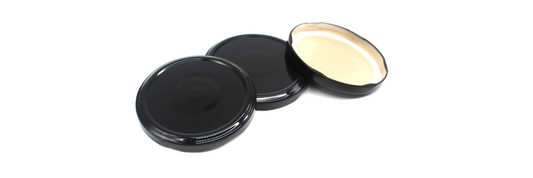Despite its negative health and environmental effects, PFAS, also known as "forever chemicals," is one of the most widely used compounds in a variety of industries, including food packaging. What restaurant owners need to know about this substance is as follows.
What is PFAS?
Per- and Polyfluorinated Substances is a shorthand for PFAS. Fluoropolymer coatings and products that are resistant to heat, stains, oil, grease, and water, are made using a class of chemicals known as PFAS. PFAS, which are frequently used and applied to a range of items, are referred to as "forever chemicals." These products include:
- Food packaging
- Non-stick cookware
- Stain-resistant fabrics and carpets
- Firefighting foams
- Water-repellent clothing
- Cosmetics
- Industrial products
Common types of PFAS:
- Perfluorooctane sulfonic acid, or PFOS. One kind of PFAS that is found in many products is called PFOS, and it can be found in packaged foods, nonstick cookware, and firefighting foam. A number of nations, including the US have outlawed PFOS.
- Perfluorooctanoic acid, or PFOA. Another form of PFAS found in some of the same items as PFOS is called PFOA. Furthermore, PFOA is prohibited in some nations.
- PFAAs stand for perfluoroalkyl acids. PFOS and PFOA share structural similarities with PFAAs, which are types of PFAS. PFAAs are present in a wide range of products, such as home appliances, waterproof clothing, and nonstick cookware.

Should we be concern about PFAS
Although PFAS are capable of breaking down, the process happens very slowly. Products that break down naturally will release per- and polyfluoroalkyl substances (PFAS) into the soil and water, endangering human health and harming the ecosystem.
What do PFAS do to humans?
PFAS affects human health in a variety of ways. PFAS have been connected to several illnesses, such as:- Cancer
- Harm to growth and reproduction
- Immune system impairment
- Thyroid problems
- The cholesterol issue
- Liver issues
- Nephrotic problems
A person's risk of developing health issues increases with PFAS exposure.
What impact does PFAS have on the environment?
As PFAS-containing products break down in the environment, they take this chemical with them and harm the surrounding ecosystem. Among the impacts are:- Pollution of soil, water, and air due to the emission of Perfluoroalkyster Serum (PFAS) compounds into the atmosphere, groundwater, and soil.
- Harmful to animals: PFAS can interfere with reproduction when it builds up in the bodies of wild animals.
- Plant damage: PFAS have the potential to lower harvest rates.
PFAS in food products
Are PFAS used in food packaging?
PFAS is frequently and extensively used in food packaging due to its non-stick, waterproof, and anti-grease properties. PFAS is frequently used in the following kinds of food packaging:
- Fast food, microwave popcorn: PFAS is used for making grease- or waterproof-resistant fast food containers, like pizza boxes, hamburger wrappers, and French fry bags.
- Take-out containers: These are made of PFAS, which have the property of resisting grease and water.
- Non-stick cookware: PFAS is added to make pans and baking trays non-stick because of its non-stick characteristics.
- Equipment for processing food
As of right now, certain nations have enacted laws restricting the use of PFAS in food packaging. For instance, since 2020, the United States has prohibited the use of some PFAS in food packaging. The Canadian government has unveiled a strategy to lessen the harm that PFAS do to the environment and public health. Canada is particularly considering of banning the use of PFOS and PFOA, two PFAS substances, in packaged foods.
How to avoid PFAS in food packaging?
Here are some typical methods to lower your risk of being exposed to PFAS from food packaging:
- Search for labels that state PFAS or PFOS/PFOA is not present.
- Steer clear of non-stick food packaging.
- Give paper, wood, or glass food packaging top priority.

Must-known for restaurant owners when choosing food packaging to avoid PFAS
Restaurants have to be mindful and selective when selecting food packaging because products containing PFAS have a negative impact on both human health and the environment.
- Restaurant operators should be aware of the following when it comes to PFAS use:
- Make use of food packaging items that are marked "Free from PFOS/PFOA" or "PFAS-free." To obtain the further information they need, restaurant owners can get in touch with the food packaging supplier directly.
- Verify if the regulations are met by the PFAS index. The FDA (Food and Drug Administration) in the US sets a limit of 0.005 parts per million (ppm) for both PFOS and PFOA indicators. Environment and Climate Change Canada has, in the meanwhile, developed legislation in Canada that restricts the amount of PFAS in food packaging. More specifically, no component of food packaging may have more PFOS or PFOA than 0.0005 parts per million.
- Select packaging of eco-friendly materials like cardboard, paper, or biodegradable plastic since they are less likely than traditional plastics to contain per- and polyfluoroalkyl substances (PFAS).
- To assist in reducing the amount of per- and polyfluoroalkyl substances (PFAS) in our lives, businesses and food stores should promote sustainable and eco-friendly lifestyles among their customers. One method to do this is by encouraging them to use reusable items or refills.
At Kimecopak, products for food packaging are manufactured in compliance with safety guidelines pertaining to PFAS indications. Specifically, Kimecopak offers safe alternatives for food packaging made of bagasse, bamboo fiber for food containers, and chemical-free wooden or bamboo cutlery.
In conclusion, PFAS is a substance that is harmful to both the environment and human health. Businesses have to select food packaging items from trustworthy packaging suppliers with care to prevent affecting the health of consumers.









